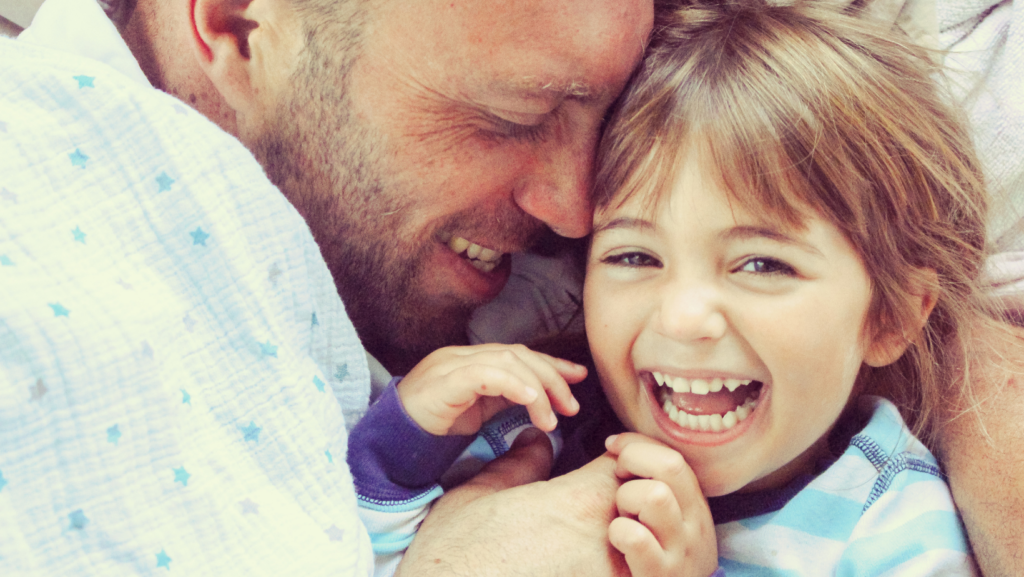Diana Baumrind’s groundbreaking research on parenting styles has revolutionized our understanding of child-rearing approaches. Her framework identifies four distinct parenting styles that balance two crucial dimensions: parental responsiveness and parental demandingness. These dimensions shape how parents interact with their children and influence their development.
Understanding these parenting dimensions helps caregivers recognize their own approach and its potential impact on their children’s growth. Responsiveness refers to how parents respond to their children’s needs while demandingness relates to the expectations and control parents exercise. Each parenting style – authoritative, authoritarian, permissive and uninvolved – represents a unique combination of these fundamental dimensions shaping parent-child relationships and developmental outcomes.
Baumrind’s Four Styles of Parenting Balance
Baumrind’s parenting model focuses on two core dimensions that shape parent-child interactions. These dimensions create distinct patterns of parental behavior that influence
child development outcomes.
Demandingness vs Responsiveness
Parental demandingness encompasses behavioral expectations parents set for their children, including:
- Establishing clear rules for daily routines
- Setting age-appropriate academic standards
- Monitoring social activities with peers
- Enforcing consistent disciplinary measures
- Requiring participation in family responsibilities
Parental responsiveness reflects how parents acknowledge their children’s needs through:
- Providing emotional support during challenges
- Offering praise for achievements
- Responding promptly to communication attempts
- Showing interest in daily activities
- Demonstrating empathy during distress
Control vs Warmth
The control dimension manifests in parental behaviors such as:
- Setting boundaries for acceptable behavior
- Implementing consequences for rule violations
- Supervising children’s activities
- Managing schedules and routines
- Guiding decision-making processes
- Physical affection like hugs or gentle touches
- Verbal expressions of love and acceptance
- Active listening during conversations
- Quality time spent together
- Positive reinforcement of desired behaviors
| Dimension | High Level | Low Level |
|---|---|---|
| Demandingness | Strict rules, high expectations | Few rules, minimal expectations |
| Responsiveness | Attentive, nurturing | Detached, indifferent |
| Control | Strong supervision, clear limits | Minimal oversight, loose boundaries |
| Warmth | Frequent affection, emotional support | Limited emotional connection |
The Authoritative Parenting Style
Authoritative parenting combines high levels of both demandingness and responsiveness to create a balanced approach to child-rearing. This style emphasizes clear expectations while maintaining emotional warmth and open communication with children.
High Demandingness and High Responsiveness
Authoritative parents establish firm guidelines while remaining attentive to their children’s emotional needs. They:
- Communicate clear behavior standards
- Monitor academic performance consistently
- Set age-appropriate expectations
- Respond promptly to children’s concerns
- Encourage independence within established limits
- Provide explanations for rules and decisions
| Dimension | Authoritative Parenting Characteristics |
|---|---|
| Demandingness | High expectations, clear rules, consistent monitoring |
| Responsiveness | Active listening, emotional support, positive feedback |
- Express rules with clear rationales
- Allow discussion of guidelines
- Enforce consequences consistently
- Acknowledge children’s feelings during discipline
- Maintain warmth during correction
- Adjust expectations based on developmental stages
| Boundary Setting Elements | Implementation Methods |
|---|---|
| Rule Communication | Direct explanation, open dialogue |
| Discipline Approach | Logical consequences, positive reinforcement |
| Emotional Support | Active validation, maintained connection |
The Authoritarian Parenting Style
Authoritarian parenting represents a strict approach characterized by high demands paired with minimal emotional responsiveness. This style emphasizes obedience over understanding with rigid rules enforced through punishment rather than discussion.
High Demandingness and Low Responsiveness
Authoritarian parents maintain elevated expectations while offering limited emotional support. These parents:
- Enforce strict academic standards without considering individual capabilities
- Demand immediate compliance with directives
- Monitor activities extensively without child input
- Implement harsh consequences for rule violations
- Prioritize achievement over emotional well-being
| Dimension | Level | Observable Behaviors |
|---|---|---|
| Demandingness | High | Strict rules, rigid schedules, academic pressure |
| Responsiveness | Low | Limited praise, minimal affection, infrequent support |
Rules Without Flexibility
The authoritarian approach creates a rigid environment with inflexible boundaries. Key characteristics include:
- Fixed behavioral expectations without room for negotiation
- Predetermined consequences applied consistently regardless of circumstances
- Limited explanation of rules or rationales
- Zero tolerance for questioning authority
- Structured routines with minimal adaptability
| Rule Enforcement | Implementation |
|---|---|
| Communication Style | One-way directives |
| Discipline Method | Punishment-based |
| Decision Making | Parent-controlled |
| Boundary Setting | Rigid and absolute |
- Strict supervision of activities
- Regular inspection of homework completion
- Enforcement of precise schedules
- Detailed behavioral guidelines
- Consistent punishment protocols
The Permissive Parenting Style
Permissive parenting combines high responsiveness with low demandingness, creating an indulgent environment where children receive abundant emotional support but minimal behavioral guidance. This style represents one of Baumrind’s four fundamental parenting approaches, characterized by its lenient nature.
Low Demandingness and High Responsiveness
Permissive parents display exceptional emotional availability while setting few boundaries or expectations. They:
- Respond immediately to children’s emotional needs
- Offer continuous praise regardless of behavior
- Avoid confrontation about misconduct
- Prioritize friendship over guidance
- Accept impulsive behavior without correction
Key Behavioral Patterns:
| Aspect | Manifestation |
|---|---|
| Rule Setting | Minimal to none |
| Discipline | Rarely enforced |
| Academic Standards | Few expectations |
| Monitoring | Limited supervision |
| Consequences | Infrequently applied |
Freedom Without Structure
The permissive environment lacks essential organizational elements for child development:
- Children make decisions without age-appropriate guidance
- Bedtimes remain flexible or nonexistent
- Homework completion stays optional
- Screen time continues unrestricted
- Dietary choices face minimal regulation
| Area | Observable Effect |
|---|---|
| Self-regulation | Limited development |
| Decision-making | Poor boundary recognition |
| Academic performance | Inconsistent results |
| Social skills | Difficulty following rules |
| Emotional maturity | Delayed development |
The Neglectful Parenting Style
Neglectful parenting represents the combination of low demandingness and low responsiveness in Baumrind’s framework. This style demonstrates minimal investment in both behavioral control and emotional support, creating an environment of disconnection between parent and child.
Low Demandingness and Low Responsiveness
Neglectful parents exhibit minimal expectations for their children’s behavior and academic performance. They set no household rules, implement zero disciplinary measures or boundaries, and remain uninvolved in monitoring daily activities. Common characteristics include:
- Absent supervision of academic progress or homework completion
- Limited awareness of children’s social activities or friendships
- No established mealtimes or bedtime routines
- Zero participation in children’s extracurricular activities
- Inconsistent enforcement of basic safety guidelines
Lack of Involvement and Support
Parents practicing neglectful parenting demonstrate minimal emotional engagement with their children. Their interaction patterns include:
- Limited responses to children’s emotional needs or distress
- Infrequent communication about daily experiences
- Absence during significant life events or milestones
- No provision of guidance for decision-making
- Minimal physical presence in the home environment
| Communication Aspect | Typical Pattern |
|---|---|
| Daily Conversations | Less than 5 minutes |
| Emotional Expression | Rare or absent |
| Problem-solving Support | None provided |
| Interest in Activities | Minimal to none |
| Response to Achievement | No acknowledgment |
Impact of Parenting Dimensions on Child Development
Cognitive Development
Parenting dimensions significantly influence children’s cognitive abilities. High demandingness paired with high responsiveness correlates with enhanced academic performance. Children from authoritative homes demonstrate:
- Improved problem-solving abilities in complex tasks
- Higher grades across academic subjects
- Enhanced critical thinking skills
- Greater intellectual curiosity
- Stronger study habits
Emotional Regulation
The balance of parental dimensions shapes children’s emotional competence. Research indicates specific outcomes based on parenting approaches:
| Parenting Style | Emotional Regulation Outcome |
|---|---|
| Authoritative | Strong self-regulation |
| Authoritarian | Poor emotional expression |
| Permissive | Inconsistent control |
| Neglectful | Limited coping skills |
Social Competence
Parental responsiveness paired with appropriate demands creates optimal social development. Children experience:
- Enhanced peer relationships
- Stronger conflict resolution skills
- Improved leadership abilities
- Better communication patterns
- Higher empathy levels
Behavioral Outcomes
The interaction between parental dimensions affects behavioral patterns:
| Dimension Balance | Behavioral Result |
|---|---|
| High Control/High Warmth | Self-disciplined |
| High Control/Low Warmth | Rebellious |
| Low Control/High Warmth | Impulsive |
| Low Control/Low Warmth | Disengaged |
Self-Esteem Development
Parenting dimensions directly impact children’s self-concept formation. Research shows:
- Consistent feedback builds confidence
- Clear expectations establish competence
- Emotional support fosters resilience
- Balanced guidance promotes independence
- Appropriate challenges develop mastery
| Parenting Approach | Academic Impact |
|---|---|
| Clear Standards + Support | High Achievement |
| Strict Rules – Support | Average Performance |
| Few Rules + Support | Inconsistent Results |
| Limited Involvement | Poor Outcomes |
Parenting Styles
Baumrind’s four parenting styles effectively balance demandingness and responsiveness dimensions to shape child development outcomes. Understanding these dimensions helps parents recognize how their approach impacts their children’s emotional social and academic growth.
The most effective parenting style – authoritative parenting – demonstrates that balancing high expectations with emotional support creates the optimal environment for child development. Parents who aim to nurture well-adjusted children should strive to maintain consistent rules while remaining responsive to their children’s needs.
By recognizing these crucial parenting dimensions parents can make informed decisions about their parenting approach and create an environment that promotes healthy development in their children.





